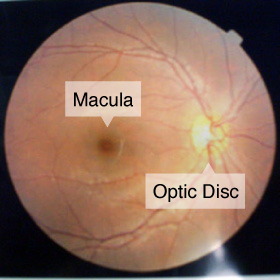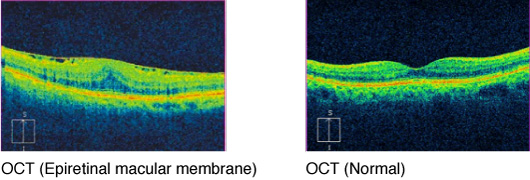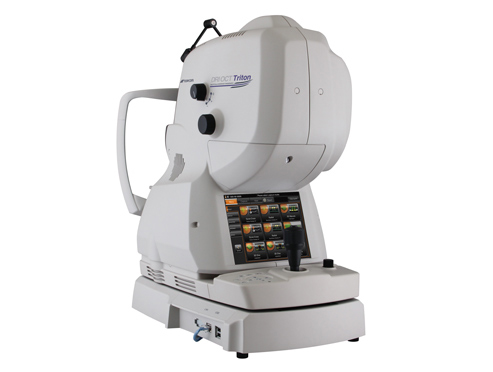Patients may also notice that the area around their central vision starts to darken, becomes blurry, distortion or objects appearing smaller than they are.


How to examine
1.Funduscopic Examination
This is an examination to check the condition of your retina. We put eye drops that dilate your pupils and observe the retina and optic nerve to check if there aren’t any diseases.
2.Fluorescein angiography
It’s a test in which a dye is injected into a vein in your arm. The dye travels throughout the body, including your eyes. Your doctor takes photographs of your eye as the dye passes through the retinal blood vessels.
3.Optical coherence tomography (OCT)
It also helps your doctor look at the retina. A machine scans the back of the eye and provides detailed three-dimensional pictures of the retina. This helps measure retinal thickness and find swelling of the retina.

Treatment
Although this disease usually gets better by its own, sometimes your vision would not fully recover, or it may re-occur by leaving the macula swollen. Therefore, it is recommended to get a follow-up observation by an ophthalmologist. Generally, you will take medication such as anti-inflammatory drugs and vitamins to heal the swollen macula. If medication does not work, there is a laser photocoagulation surgery to cauterize the damaged retinal pigment epithelium. It is possible to get a laser photocoagulation surgery at Shinjuku-Higashiguchi Eye Clinic.
1.Explanation of Medication that are Commonly Used for CSR
| Product Name |
Active Ingredient |
Effects |
Carnaculine Tablets
|
Kallidinogenase |
It dilates the peripheral blood vessels by releasing kinin in order to improve blood flow and circulatory disorder. It is usually used for the improvement of hypertension, Meniere’s disease, thromboangiitis obliterans, menopausal disorder, and for the improvement of symptoms of circulatory disorder in the retina. |
Transamin Tablets
|
Tranexamic acid |
This medicine exhibits anti-hemorrhagic/anti-allergic/anti-inflammatory effects by suppressing the activity of plasmin engaged in various bleeding symptoms. It is usually used to treat symptoms as following: bleeding tendency considered to be due to systemic hyperfibrinolysis, abnormal bleeding considered to be due to local hyperfibrinolysis, erythema/swelling/itch observed in eczema/hives/drug rash/toxicoderma, sore throat/redness/congestion/swelling observed in tonsillitis/pharyngolaryngitis, pain inside the mouth in stomatitis, aphtha in oral mucous membrane. |
2.Laser coagulation
Laser coagulation uses the heat from a laser to seal or destroy abnormal, leaking blood vessels in the retina. Laser coagulation may be used to prevent further progression of retinopathy.







